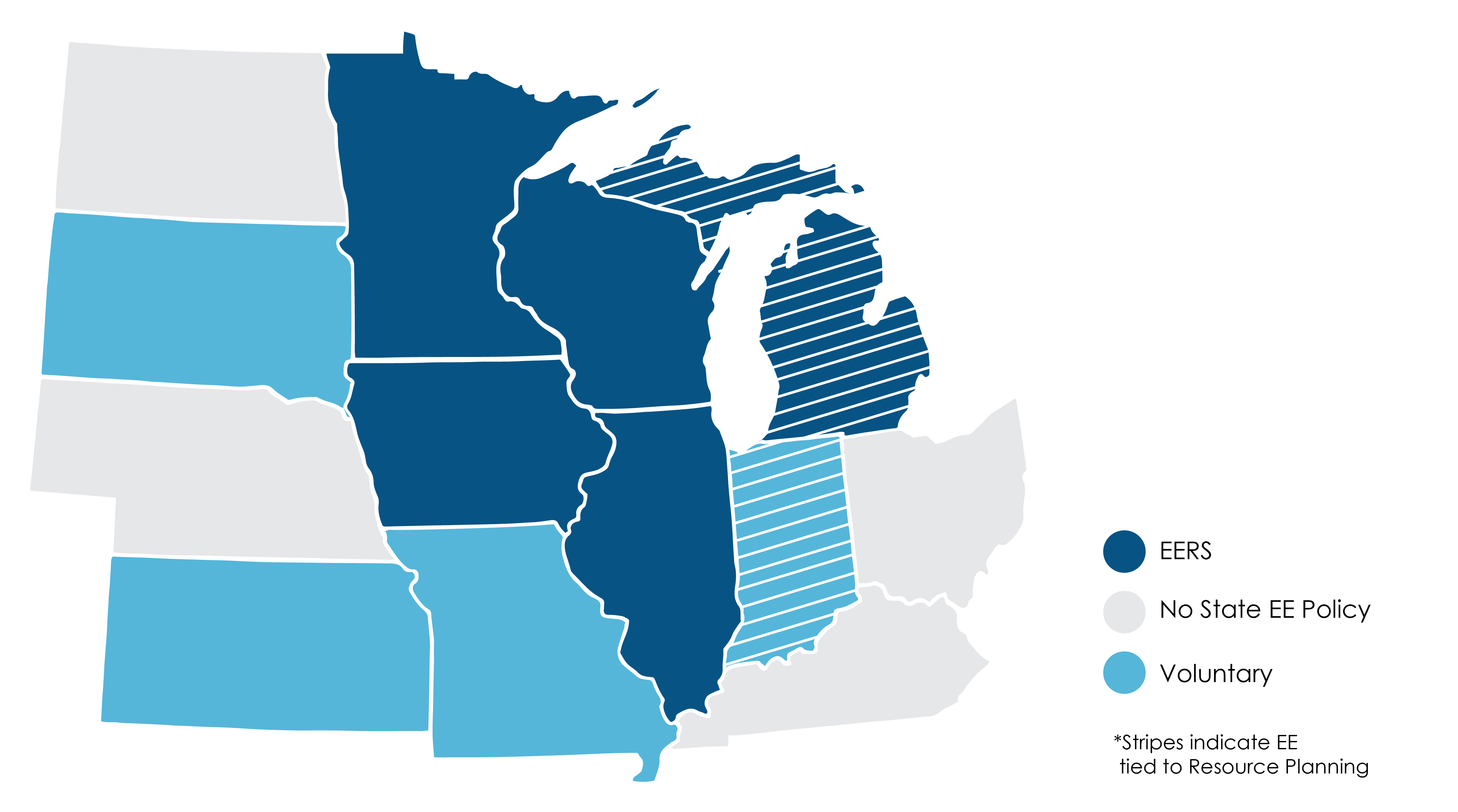Policy Drives Energy Efficiency
Energy Efficiency Resource Standards (EERS) are policies that require utilities to achieve specific savings or spending targets to reduce customer energy use. An EERS provides stable, ongoing funding for energy efficiency programs paid for by the utility’s customers. Depending on the state policy, an EERS can apply to all utilities within the state, or only to utilities regulated by the state utility commission. Some states’ EERS apply only to electric utilities, others have requirements for both electric and gas.
Several Midwest states have enacted an EERS. In other states, policies have enabled utilities to voluntarily seek approval of efficiency plans on a utility-by-utility, case-by-case basis. A third approach that has been adopted is transitioning to goal-oriented energy resource planning processes that require the consideration of demand-side resources along with the supply side. 
The broad policies that drive energy efficiency in the Midwest are shown in the map to the right.